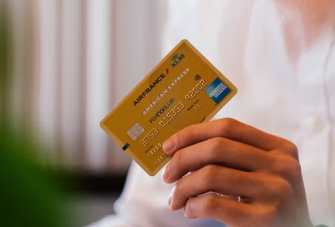Liquor Store Profit Margins
If you’re a liquor store owner or are thinking about opening one, you may be wondering exactly how much to charge customers in order to have sustainable liquor store profit margins. We explain what goes into price-setting and what a healthy profit margin could look like for your business.
Identify Your Costs
Every business has start-up and ongoing costs that you’ll need to offset with the amount of revenue you earn from liquor sales. You can do this, in part, by wisely setting your retail prices.
Before you can decide what prices to set, and how much profit margin you’ll need to have in order to stay afloat and succeed in the liquor store market, you need to understand your costs.
Typically, you’ll have at least some (if not all) of the following costs to recoup:
- Inventory (the items on the shelves) [1]
- Utilities
- Rent/mortgage
- Business taxes
- Employee wages/benefits/taxes
- Liquor license fees/renewals
- Other specialized licenses/permits
Once you know what your costs are, you can start to figure out selling prices and profit margins, but first, you need to figure out your cost per unit.
Cost Per Unit
This tells you how much each bottle or other individual product you sell costs you, beyond just the wholesale price you’ve paid for it. The cost per unit should take all the factors listed above into financial account [2].
A simple formula for calculating cost per unit takes your total fixed costs plus your total variable costs and divides that number by the total units produced [3].
As a retail liquor store, you’re not going to be actually producing any units, so we can replace that with the total bottles of wine or beer purchased.
Let’s say you’ve determined that your fixed costs (taxes, salaries, rent, etc.) and your total variable costs (inventory, etc.) total €30,000 and you’re selling 5,000 cases of beer. Your unit cost (or cost per unit) would be €6 per case.
Now that you know how much each case of beer is costing you, you can set a reasonable retail price based on your desired (or allowed) profit margin and location.
Typical Liquor Store Profit Margins
On average, liquor stores tend to have an overall profit margin of between 20% and 30% annually [4].
There are pros and cons to aiming for higher profit margins since you’ll need to charge customers higher prices for your products, which might not make your store as appealing as a lower-priced competitor.
Of course, the profit margins your store has are going to vary greatly depending on the types of alcohol you choose to sell, the type of business you have, and your location [5]. We take a closer look at each below.
Types of Businesses
Supermarkets and petrol stations that sell alcohol may be able to handle smaller profit margins from alcohol sales than liquor stores because they’re not relying on alcohol for their profits.
Restaurants and bars can get away with a much higher profit margin for alcoholic beverages since they’re selling by the drink/glass and not typically selling an entire bottle to the consumer.
Normally, restaurants have profit margins of around 80% for each drink they sell because they’re looking at “pour cost,” not wholesale cost [5].
And bars tend to have the highest margins of all, sometimes marking up alcohol by 200% or more [6].
So, a simple liquor store (no food, petrol, sit-in bar areas, or cooked food) will tend to have lower profit margins than restaurants and bars but may have higher margins than supermarkets and petrol stations that are involved in the sale of alcohol.
Types of Alcohol
Believe it or not, beer, wine, and hard liquor are generally marked up at different rates. It’s typical to charge a 20-30% markup on beer. If you’re working with craft brewers or hard-to-come-by products, you could have profit margins as high as 40-50%.
For wines, you can typically get away with 50% markup (or higher, depending on the brand/rarity of the wine).
For example, if a bottle of wine costs you €15, you could sell that bottle for €30 at 50% markup.
Market Saturation
As with any business, location makes a difference [8]. If you’re competing with several other liquor stores within a short distance of yours, you may have to accept smaller profit margins in order to stay competitive.
If you’re a small business located near a warehouse-type seller that can offer discount pricing because they have such high volume, you may have to drop your prices just to remain competitive, which means smaller profit margins, as well.
However, if you’re the only liquor store in town (or in your area), you can probably get away with higher profit margins without losing customers.
Even if you’re surrounded by other liquor stores, if your store offers something unique that your competitors don’t, you should be able to maintain average to above-average profit margins since you’re providing something your customers can’t find anywhere else.
For example, you could offer wine pairing classes, home-brewing classes, or specialized selections of alcoholic beverages that aren’t sold in nearby stores. You may even want to think about alcohol delivery to your customers if you live in a country that allows this [9].
The bottom line is that a liquor store in the right location, with a business owner who knows their market and can properly price their beverages, is a great business opportunity. Just don’t forget one key ingredient for your liquor store business—a powerful point of sale system.
A POS System That Delivers
Not only do you need to deliver what your customers want to have a thriving liquor store, but you also need a POS system that can deliver for you.
Your point of sale system should be flexible and modern, allowing you to ring up customer purchases made with Apple Pay and Google pay, in addition to being compatible with major credit cards like Visa, MasterCard, and American Express to name just a few.
Epos Now also provides your customers with a seamless online checkout and payment experience and keeps you up to date with robust reporting tools that allow you to track everything from sales of individual items to your inventory.
If all that wasn’t enough, Epos Now was recently ranked as one of the best POS providers in the country by US News and World Report [10].
Now that you understand how to price your inventory to keep customers coming back (and keep your store in business), you’re ready to implement a POS system that puts the finishing touches on the positive customer experience you’ve built for your brand.
You may also be interested in:




